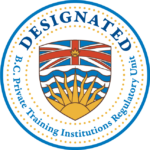Autodesk Maya is the industry standard 3D visual effects software with powerful character creation, rigging, animation, and simulation tools.
3D ANIMATION PROGRAM
CURRICULUM BREAKDOWN
AUTODESK MAYA
MODELLING
Every character, object, and landscape starts as a 3D model. Explore the limitless possibilities of what you can make with modelling.
STORYTELLING
3D animation opens up new possibilities in storytelling. Learn how to tell visual stories with 3D animation techniques.
WORKFLOWS
Learning 3D animation workflows gives you a whole overview of the different processes, stages, and roles in 3D animation. The perfect way to figure out what you want to specialize in!
COURSES
Modelling & Texturing
To begin, classes in Autodesk Maya, the industry-standard software for 3D, will help you build comfort working in the digital 3D space. Starting with primitive shapes and forms, learn the components of a model, and the ways to manipulate and combine shapes to express your creativity. As the course progresses, models will become more detailed, starting with basic hard-edged objects and advancing to complex curved props. With the introduction of reference material and image planes, learn how to break down real-life objects and replicate them digitally, adding textures along the way to bring these creations to life. Throughout this process, you’ll develop a solid understanding of the modeling workflow and 3D pipeline, both in theory and practice.
Animation I
An animator should understand how things move, act and react, how to translate that into the digital medium, and do so in a way that looks both believable and attractive. Throughout this course, create animated sequences of different lengths, build an understanding of the basics of body mechanics, paths, poses, and silhouettes, along with the 12 principles of animation to ensure your creations meet the industry’s quality requirements. Learn how to properly capture and use references to achieve an easy and natural look, and build the fundamental 3D Animation skill: the art of bringing objects to life.
Intro to Concept Design
Long before one begins an animation or modeling project, 3D artist will be developing a concept for their objects or characters. The purpose of the Intro to Concept Design course is to teach how to organize and develop ideas for production. Although technical, the 3D industry relies on its artistic fundamentals which generate captivating experiences.
Learn drawing fundamentals and transition those skills into traditional or digital drawing/painting. Use concept drawing principles like perspective, composition, proportion, and style, to effectively communicate ideas. Through theory and hands on practice, you’ll be equipped with the necessary art skills to create a fully developed concept.
Lighting I
Begin by exploring the core principles of camera work, including how cameras interact with light, composition, camera movement, and color theory. This will build an understanding of how these elements work together to create visually compelling imagery.
Learn Maya’s Arnold rendering engine, one of the top tools used in the industry today. Through engaging discussions, examples, and hands-on projects, develop universal principles that allow you to read, interpret, and create images with the key components to tell a captivating story.
CHARACTER DESIGN
Your characters are often one of the most important parts of your 3D animation work. Learn how to create dynamic and realistic characters.
MODEL RIGGING
Bring your 3D animation character to life! Rigging gives your characters the ability to move through your animated world.
ONE-ON-ONE MENTORSHIP
Our industry professional instructors provide mentoring to help find your specialization and guide you on your journey.
DEMO REEL
Your demo reel is your ticket to success in the 3D animation industry. In term 2, you begin crafting the perfect demo reel to get you hired.
COURSES
Character Modelling
Get introduced to sculpting with Zbrush, a powerful software that enables you to create lifelike, organic forms. Learn how to sculpt realistic human anatomy, focusing on key features such as musculature, facial structure, and proportions. Develop an understanding of correct anatomical proportions, ensuring accuracy in your character models. Apply texturing techniques to bring your models to life with realistic color and texture. By the end, you will have developed a full humanoid character model, refining your skills in both anatomy and 3D sculpting.
Animation II
In Animation II, apply and enhance your previous knowledge of the trade to create fluid, appealing animations with humans, quadrupeds and other types of characters. Focus on the transitions between different actions to create a seamless progression of motion by taking a quadruped from a walk to a run, then learn to make it jump and land –a sequence of different motions that comes together to create a complex action.
You will also go deeper into the difference between animation for cartoons & VFX, as well as the different styles used in TV, Video Games & Film production. With the study of different forms of animation, you will explore acting in animation and how making believable, engaging character movements is essential to bringing an animation from a moving image to a living creation.
Concept Design II
Build on your 3D concept design skills by developing a final project that showcases your technical and artistic growth. Begin by defining your project’s vision, goals, and limitations, then work closely with your instructor to refine your concept. In the final stage, pitch your idea to a panel of instructors, receive constructive feedback, and make revisions to ensure your project is ready for production.
Lighting II
Keep refining your skills to create more appealing and lifelike lighting in the 3D world. Learn how to use photometric and volumetric lighting to simulate realistic light sources. Gain a foundational understanding of arbitrary output variables (AOVs) and their application in lighting 3D scenes. Become more familiar not only with advanced techniques, but also the technical understanding on how to make sure your renders reach the desired quality, and can be used in the pipeline appropriately, while the least amount of time and resources are spent during the rendering process.
Introduction to Rigging
Rigging is the process of outfitting models with the necessary joints and controls to allow them to be manipulated by the animator – think of it as adding bones to a 3D model. Without good Riggers, animators would be working with static models or models that would not stay intact with any change of their position or movement. Get hands-on with a technical profile focused on the generalities of Rigging for Computer Animation, allowing you to bridge the gap in the pipeline between animators and modellers and develop an in-depth understanding of the entire 3D Animation workflow.
LOCAL STUDIO TOURS
Located in Vancouver, the InFocus campus sits in the heart of 3D animation in Canada. Through our partnerships, you get to tour and network with local studios where you might just find work after graduation!
NETWORKING EVENTS
Thanks to our instructors’ wide industry networks, we host many events so you can spend time with your peers outside of the classroom and meet people working in the industry.
SIMULATED STUDIO ENVIRONMENT
Your classroom is now a studio, with each student specializing in their preferred role. Working in a simulated studio setting prepares you to transition easily into a studio job after graduation.
POLISHED PORTFOLIO
Your instructors look at your demo reel and provide feedback to ensure your work is polished and ready to be shown to studios locally and worldwide.
COURSES
Advanced Modelling Studio
In this specialty and mentorship modelling course, work with advanced modelling concepts to give character models the detail and life they need. Learn the details of hair, fur, anatomy of the eye, and detailed clothing. Then, bring it all together to create a final polished version of your character models!
As you transition to the production of your demo reels, learn to bring concepts from development into practice. As in the Animation Studio, receive mentorship from industry professional modellers as you carry out self-directed work for demo reel concepts. Gather textures and other assets and work on the production process of your demo reel models.
Advanced Animation Studio
In this specialty and mentorship animation course, work with advanced animation concepts to make their characters communicate in a believable manner. Learn the details of mouth shapes to agree with anatomy, facial expressions, and bring it together to create a lip sync of your character with real dialogue. Eventually, transition to the production of your demo reel and learn to bring concepts from development into practice. Receive professional mentorship as you carry out self-directed work for demo reel concepts. Gather material, assets, and backgrounds, plan your shots, and work on the production process of your animation.
Career Development
Get prepared to enter the 3D animation industry. Build your understanding of professionalism, networking, job hunting, and other fundamentals for becoming professional 3D artists. Guest lectures with industry professionals and recruiters will teach how to pursue various career pathways, and the pros and cons of the choices you must make. Gain a clear vision of your individual career goals, and meet with recruiters to gain an insider perspective on what qualities are needed in the industry today.
If health restrictions and availability allow, tours of local 3D studios will provide a taste of the day-to-day life of an animation pro and provide valuable networking with real employers in the industry.
Demo Reel Mentorship
Work on your final animation or modelling project in a a common space to collaborate and learn from fellow students as well as access hands-on critique and guidance from both animation and modelling instructors and TA’s. Learn to communicate, critique, receive and implement feedback, and build project development skills.
It is essential that students get used to the professional workflow expected from the industry. Experience the rigorous process of revision and refinement, and manage the balance between self-directed work and maintaining a feedback loop with other artists and mentors/supervisors.
At the conclusion of this course and the 3D program, you will emerge with an impressive demo reel to show off to studios, and the technical and professional skill set the industry is seeking.
TALK TO AN ADMISSIONS ADVISOR
By submitting this form you are agreeing to be contacted by InFocus Film School. We will never sell or distribute your information, and you may opt-out of receiving emails from us at any time. Read our Privacy Policy here.

INFOCUS FILM SCHOOL
554 Seymour Street
Vancouver, BC V6B 3J5
info@infocusfilmschool.com
+1 604-915-6900


